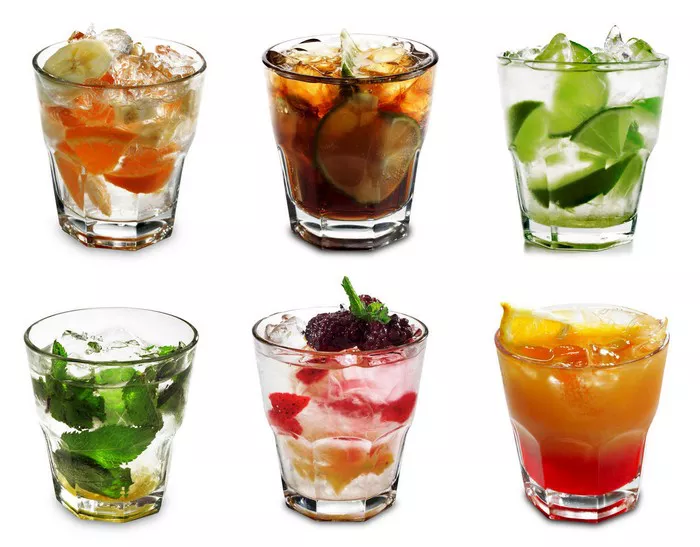In the world of cocktails, few debates are as enduring as the comparison between a Negroni and a Martini. While both are iconic drinks with distinct flavors and histories, they couldn’t be more different. From their ingredients to their origins and even their cultural significance, the Negroni and the Martini stand apart as unique expressions of mixology. Let’s delve deeper into the nuances of these two beloved libations to settle the age-old question: Is a Negroni the same as a Martini?
Understanding the Origins
To grasp the essence of the Negroni and the Martini, one must first explore their origins. The Martini, with its crisp and elegant profile, traces its roots back to the late 19th century. Originally known as the “Martinez,” this cocktail likely emerged in the United States, with variations appearing in different cities such as San Francisco and New York. Over time, it evolved into the classic Martini we know today, typically composed of gin and vermouth, garnished with an olive or a twist of lemon.
Conversely, the Negroni has a more colorful and distinctly Italian backstory. Legend has it that in the early 20th century, Count Camillo Negroni, seeking a stronger version of his favorite cocktail, the Americano, instructed his bartender to replace the soda water with gin. This simple substitution birthed the Negroni, a bittersweet concoction made with equal parts gin, Campari, and sweet vermouth. Its rich history and association with Italian culture have elevated the Negroni to legendary status in the world of mixology.
Deconstructing the Ingredients
One of the most glaring differences between a Negroni and a Martini lies in their ingredients. While both cocktails typically contain gin, their accompanying components diverge significantly, resulting in distinct flavor profiles.
A traditional Martini consists primarily of gin and dry vermouth, with optional additions such as bitters or garnishes like olives or lemon twists. The emphasis is on the botanical notes of the gin, balanced by the subtle herbal and floral undertones of dry vermouth. This creates a clean and crisp cocktail with a bracingly dry finish, perfect for those who appreciate simplicity and refinement in their drinks.
On the other hand, the Negroni embraces a more complex flavor profile, thanks to the inclusion of Campari and sweet vermouth alongside gin. Campari, a bitter Italian liqueur infused with herbs and fruits, lends the Negroni its signature crimson hue and distinctive bitterness. When combined with the herbal sweetness of vermouth and the juniper-forward character of gin, the result is a harmonious blend of flavors that tantalizes the palate with its interplay of sweetness, bitterness, and botanical depth.
Exploring Cultural Significance
Beyond their ingredients and origins, the Negroni and the Martini hold distinct cultural significance that sets them apart in the world of cocktails. The Martini, with its association with elegance, sophistication, and the “Mad Men” era of cocktail culture, has become an enduring symbol of refinement and indulgence. It’s the drink of choice for James Bond, who famously ordered his Martinis “shaken, not stirred,” further cementing its status as the quintessential cocktail of the suave and debonair.
In contrast, the Negroni carries with it a sense of old-world charm and Italian flair. Its association with Italian aperitivo culture, where drinks are enjoyed before dinner to stimulate the appetite, has made it a beloved fixture in bars and cafes across Italy and beyond. The Negroni also has a charitable aspect, with the annual Negroni Week celebrating the cocktail while raising funds for various charitable causes—a testament to its enduring popularity and cultural impact.
The Art of Mixology
While the Negroni and the Martini may seem worlds apart in terms of flavor and cultural significance, they both exemplify the artistry and creativity inherent in mixology. Whether it’s the careful balance of botanicals in a Martini or the bold combination of flavors in a Negroni, crafting the perfect cocktail requires skill, precision, and a deep understanding of ingredients and techniques.
Mixologists and bartenders around the world continue to experiment with variations of the Negroni and the Martini, incorporating new ingredients, techniques, and garnishes to push the boundaries of flavor and creativity. From barrel-aged Martinis to smoked Negronis, the possibilities are endless, ensuring that these timeless classics remain relevant and exciting in a constantly evolving cocktail landscape.
Conclusion: Appreciating the Differences
In conclusion, while the Negroni and the Martini may share a common base spirit in gin, their differences far outweigh their similarities. From their origins and ingredients to their cultural significance and flavor profiles, the Negroni and the Martini each offer a unique and distinct drinking experience. Whether you prefer the crisp elegance of a Martini or the bold complexity of a Negroni, there’s no denying the enduring appeal of these iconic cocktails. So the next time you find yourself pondering the question, “Is a Negroni the same as a Martini?” remember to savor the nuances that make each drink special in its own right. Cheers!


